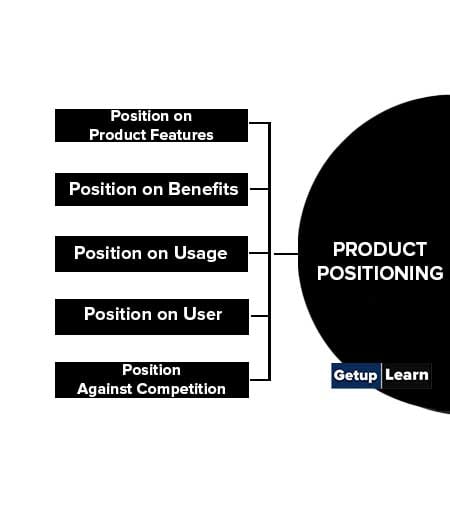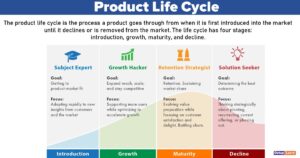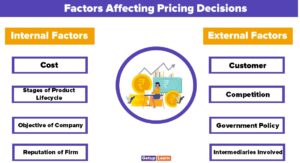Table of Contents
- 1 What is Product Positioning?
- 2 Product Positioning Strategies
- 3 Brand Repositioning
-
4 Reasons to Reposition a Brand
- 4.1 Competitors Have Usurped Your Value Proposition
- 4.2 Your Brand Position Has Become Confusing
- 4.3 Your Company Has a New, Highly Proprietary Competitive Advantage
- 4.4 There is a Change in the Company’s Strategic Direction
- 4.5 A New Competitor Arrives and Changes the Game
- 4.6 There is a Significant Change in Corporate Culture
- 5 c
- 6 What is Brand Mantra?
- 7 FAQ Related to Product Positioning
What is Product Positioning?
Product positioning can be defined as the place occupied in consumers’ minds regarding the firm’s product(s) or brand(s), distinguishing on the basis of product attributes.
Product positioning can also be defined as the act of designing a company’s offering and image to occupy a distinctive place in the mind of the target market. The goal is to place the brand in the minds of consumers to maximize the potential benefits to the firm.

For Example, A handbag maker may position its brand as a luxury status symbol.
- A car maker may position itself as fuel-efficient and innovative design.
- A hotel may position itself as the provider of economy rooms with free breakfast.
A well-positioned brand should be distinctive in its meaning and execution. A good positioning should also keep future positioning in mind. The marketer should define and communicate similarities and differences between their brand and their competitors.
Product Positioning Strategies
These are the product positioning strategies explained below:
- Position on Product Features
- Position on Benefits
- Position on Usage
- Position on User
- Position Against Competition

Position on Product Features
The product may be positioned on the basis of product features. For example, an advertisement may attempt to position the product by reference to its specific features. Although this may be a successful way to indicate product superiority, consumers are generally more interested in what such features mean to them, that is, how they can benefit from the product.
Position on Benefits
This approach is closely related to the previous method. Toothpaste advertising often features the benefit approach, as the examples of a crest (decay prevention), close-up (sex appeal through white teeth and fresh breath), and Aquafresh (a combination of these benefits) illustrate.
Position on Usage
This technique is related to benefit positioning. Many products are sold on the basis of their consumer usage situation. Companies have sometimes sought to broaden their brand’s association with a particular usage or situation.
Campbell’s soup for many years was positioned for use at lunchtime and advertised extensively over noon time radio. It now stresses a variety of uses for soup (recipes are on labels) and a broader time for consumption, with the more general theme “Soup is good food”.
Position on User
This approach associates the product with a user or a class of users. Some cosmetics companies seek a successful, highly visible model as their spokesperson as the association for their brand. Other brands may pick a lesser-known model to portray a certain lifestyle in their ads. (Revlon’s charlie cosmetic line, for example).
Position Against Competition
Often, success for a company involves looking for weak points in the positions of its competitors and them launching marketing attacks· against those weak points. In this approach, the marketer may either directly on indirectly make a comparison with competing products.
For example, the famous “Uncola” campaign successfully positioned up as an alternative to coke, Pepsi, and other colas.
Brand Repositioning
Brand repositioning is all about changing the status of your brand by modifying its appeal to customers. However, determining when your brand needs to be repositioned is not always crystal clear. In fact, oftentimes the way companies determine when to reposition is akin to how different people approach shopping.
When it comes to deciding when to reposition a brand, many businesses vacillate in a state of flux between extremes like the shoppers because they are uncertain about what constitutes a reason to reposition.
Some change their brand positioning too often in reaction to changing market trends. This leaves buyers confused about who the company really is. Still, others don’t update their look, feel, or messaging for 10 or more years, falling out of step with buyer wants and needs. Clearly, neither extreme is right. So how can a business decide when it’s time to reposition its brand?
Reasons to Reposition a Brand
Even though repositioning is done well and takes some time and effort, it’s critical to realign your brand position when your business is facing any of these situations. Following are the reasons to reposition a brand:
- Competitors Have Usurped Your Value Proposition
- Your Brand Position Has Become Confusing
- Your Company Has a New, Highly Proprietary Competitive Advantage
- There is a Change in the Company’s Strategic Direction
- A New Competitor Arrives and Changes the Game
- There is a Significant Change in Corporate Culture
Competitors Have Usurped Your Value Proposition
This dilutes the effectiveness of your positioning causing a market reaction to your primary brand benefit shifting. When competitors start delivering a similar message to yours the positioning benefit morphs into a cost-of-entry benefit, instead of one that is uniquely your own.
Your Brand Position Has Become Confusing
This can happen over time to a brand, especially as new messages are added to the company story. Alternatively, perhaps your brand position was never clear. Regardless of the reason, when buyers are confused about your primary brand benefit it’s time to reposition.
Your Company Has a New, Highly Proprietary Competitive Advantage
These are exciting times and often include new patent-pending technology or a unique offering that competitors can’t easily duplicate. If the brand isn’t repositioned to capitalize on the new competitive advantage your marketing won’t be able to leverage the benefits.
There is a Change in the Company’s Strategic Direction
Any tectonic shift such as a new line of business, acquisition, or expansion into a new market will render the current positioning out of date. Strategic changes require a revisit of brand positioning so that your customers can clearly understand what this change means to them.
A New Competitor Arrives and Changes the Game
Change is inevitable and competitors keep every business on its toes. When a new one enters your industry and steals buyers with a superior value proposition it’s time to rethink your brand position to ensure that it’s still relevant to your market.
There is a Significant Change in Corporate Culture
When a new CEO joins, oftentimes the personality of the company shifts. With events that influence the culture, it’s worthwhile to revisit your brand personality, at minimum, to make sure that it still matches the culture.
Brand repositioning doesn’t start with a new design, logo, or name. It starts by drawing on deep customer insights. Repositioning requires an intensely disciplined focus to realign the brand promise with unmet customer needs, in a way that is better than the competition is doing.
When done well the payoff can be great. Repositioning done at the right time and in the right way is often the impetus that spurs a turnaround that leads to a company’s continued success.
c
Following are the steps which marketers have to follow in order to create a unique identity of the product or services in the mind of customers. These are the steps to product positioning:
- Identify Your Target Audience
- Identify the Product Features
- Unique Selling Propositions
- Know Your Competitors
- Ways to Promote Brands
- Maintain Position of Brand

Identify Your Target Audience
In this step, marketers need to identify the target audience to understand their needs and preference. What is the customer expectation from you?
Identify the Product Features
Marketers must be aware of the product and service benefits and features then only they can sell the product and service efficiently. If one is convinced with the product then he will have more confidence to sell.
If a marketer is using an Apple iPhone then be can sell it with more confidence as he is fully aware of the product.
Unique Selling Propositions
The organizations must create USPs of their brands and effectively communicate the same to the target audience.
Let’s see a few examples:
Anti–Dandruff Shampoo: People purchase this particular type of shampoo to get rid of dandruff. This is how the product is positioned in the minds of the individuals.
Dabur Chyawanprash: “to strengthen their body’s internal defense mechanism and fight against germs, infections, and stress.” That’s the image of Dabur Chyawanprash in the minds of consumers. It is very important for the marketer to communicate the USP to the audience by advertising, slogans, hoardings, etc.
Know Your Competitors
Marketers must know who are their competitors, and what they are offering. How different is your product from the competitors? The marketer must also try to distinguish their product from their competitors, without underestimating them, and observing them regularly.
Ways to Promote Brands
There are several ways through which brands can be promoted. The marketer must select the right theme, and catchy taglines, and highlight the benefits of the products.
Maintain Position of Brand
The marketer must fulfill the expectation of the consumer. It must never compromise on quality or drastically fluctuate the price of products.
What is Brand Mantra?
A brand mantra is three to four words that encapsulate the entire positioning platform (the competitive frame of reference, the Points of Difference, the Points of Parity) and everything else about your brand into one thought.
The purpose of the brand mantra is to ensure that all stakeholders understand what the brand most fundamentally represents, so all can adjust their actions accordingly.
Following are examples of brand mantras:
Nike
Nike: Authentic Athletic Performance: One of the best brand mantras of all time was developed by Nike’s marketing guru Scott Bedbury in the late 1980s (he later become Starbucks’ marketing guru). Bedbury coined the phrase “brand mantra”.
It did everything you would want a brand to do–kept the Nike brand on track, differentiated the brand from its main competitor at that time (Reebok), and genuinely inspired Nike employees.
Disney
Disney: Fun Family Entertainment: Adding the word “Magical” would have probably made it even better, but this brand mantra–also created in the late 1980s–was crucial in ensuring the powerful Disney marketing machine didn’t overextend the brand. Establishing an office of brand management at that same time with a mission to “inform and enforce” the brand mantra gave it real teeth.
Ritz–Carlton
Ritz–Carlton: Ladies & Gentlemen Serving Ladies & Gentlemen: The Ritz–Carlton brand mantra has a clear internal and external message, especially important consideration for service brands. It is simple but universally applicable in all that Ritz–Carlton does and is highly aspirational.
BMW
BMW: Ultimate Driving Machine: BMW’s brand mantra is noteworthy in two ways. One, it reveals the power of a straddle branding strategy by combining two seemingly incompatible sets of attributes or benefits.
When launched in North America, there were cars that offered either luxury or performance, but not both. Two, it is also a good example of how a brand mantra can be used as a slogan if its descriptive nature is compelling enough.
What are the product positioning strategies?
Product positioning strategies are given below:
1. Position on Product Features
2. Position on Benefits
3. Position on Usage
4. Position of User
5. Position Against Competition.
What are the steps to product positioning?
Following are the steps to product positioning:
1. Identify Your Target Audience
2. Identify the Product Features
3. Unique Selling Propositions
4. Know Your Competitors
5. Ways to Promote Brands
6. Maintain Position of Brand.
What are the reasons to reposition a brand?
The following are the reasons to reposition a brand:
1. Competitors Have Usurped Your Value Proposition
2. Your Brand Position Has Become Confusing
3. Your Company Has a New, Highly Proprietary Competitive Advantage
4. There is a Change in the Company’s Strategic Direction
5. A New Competitor Arrives and Changes the Game
6. There is a Significant Change in Corporate Culture












